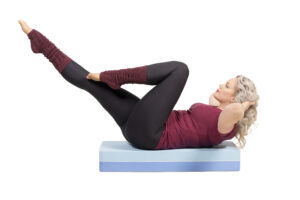The debate between step aerobics and running as forms of exercise often boils down to personal preferences, fitness goals, and individual physical conditions. While both activities offer a range of benefits, step aerobics does have certain advantages that might make it a more appealing choice for some individuals. Here’s a closer look at why step aerobics could be considered better than running in certain contexts:
1. Low-Impact Option:
Step aerobics is a low-impact exercise, as your feet land on a padded platform rather than a hard surface like pavement. This can be particularly advantageous for individuals with joint issues, such as knee or ankle problems. Running, on the other hand, can put more stress on joints and potentially lead to overuse injuries.
2. Cardiovascular Benefits:
Both step aerobics and running offer cardiovascular benefits by increasing heart rate and improving overall endurance. However, step aerobics provides a structured and controlled environment that allows you to adjust the intensity according to your fitness level, making it a suitable option for beginners and those who are looking for a less intense way to improve cardiovascular fitness.
3. Muscle Engagement:
Step aerobics engages a variety of muscle groups, including the quadriceps, hamstrings, glutes, calves, and core muscles. The choreographed movements involve stepping up, down, and performing various patterns, leading to well-rounded muscle engagement. Running primarily targets the lower body muscles, with less emphasis on upper body engagement.
4. Coordination and Cognitive Benefits:
Step aerobics involves following choreographed routines that challenge coordination, balance, and mental focus. This can be especially appealing for individuals who enjoy multitasking and want to work on both their physical and cognitive skills. Running is a more straightforward activity in terms of movement patterns.
5. Variety and Social Interaction:
Step aerobics classes offer a social and interactive component, which can make exercising more enjoyable for some individuals. Group classes provide a supportive environment and the opportunity to connect with others who share similar fitness goals. Running is often a solitary activity, although group runs and events are also available.
6. Customizable Intensity:
Step aerobics routines can be customized to fit your fitness level and goals. By adjusting the step height, pace, and complexity of the routines, you can gradually increase the intensity as you progress. Running can also be adjusted for intensity through factors like speed and terrain, but it might pose a higher impact challenge for beginners.
7. Creativity in Workouts:
Step aerobics offers a creative outlet where you can modify routines, add dance elements, or incorporate weights for an extra challenge. This creative aspect can keep workouts engaging and prevent boredom. Running is more straightforward in terms of movement variety.
Conclusion:
While both step aerobics and running have their own unique benefits, step aerobics stands out as a lower-impact option that provides cardiovascular benefits, engages multiple muscle groups, challenges coordination and cognitive skills, and offers social interaction. Ultimately, the “better” choice between the two depends on your individual preferences, fitness goals, physical condition, and what type of exercise resonates with you the most. Remember that variety in your fitness routine can also be beneficial, allowing you to enjoy the benefits of both activities and preventing overuse injuries from repetitive motions.

Join Freedom.Fit today with code “Workout” and save 25%







